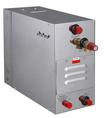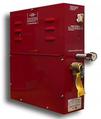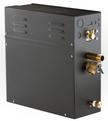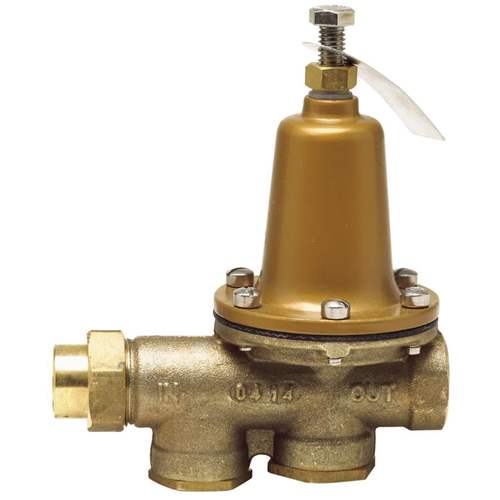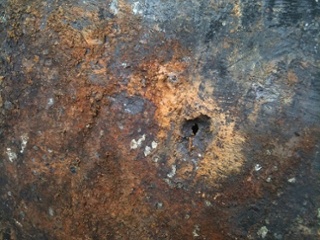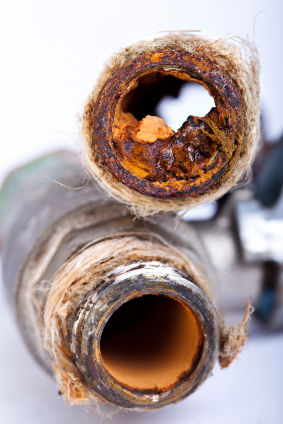Which steam generator best serves You? I compile useful information to help you make a decision.
Steam Spa - Steamist - MR. STEAM - KOHLER - Amerec - STEAMBATH - THERMASOL -Whirlpool - ROMA - STEAMCORE
Take the
Dry Steam VS WET Steam Generators
The Most important page on this site
How to choose between the 2 Types
Don't buy without reading this page.
Need advice, call Sharon or Alex at 1-877-310-8385
If you have a complaint on a steam generator and you want to share your experience, let me know on my contact page.
1-877-310-8385
Open from 8am till 10pm
Ask for Alex
SteamReviewed.com
1-877-310-8385
Open from 8am till 10pm
Ask for Sharon
After limescale problems from people that don't use surgical steel with hard water and don't have an auto flush that flushes twice with cold water (older generators only flush once), is the 2nd biggest problem that causes leaks and nearly every customer complaint is not having a quality water pressure reducer. Not having one of these attached to your steam generator can cause many problems and expenses down the road.
Make sure the one you get is a quality one or it can rust and corrode also. Depending on your water, you might get by with a cheap one or have to buy a more expensive one.
Contact me so you know all the things that can preserve your generator so you don't have to spend lots of time maintaining your steam generator.
If getting a water pressure reducer make sure you get the type that does not have a cartridge and does not have plastic internals.
All brass and all internals are separate instead of being in a cartridge. The best go down to 10psi without plastic mounts and cartridges. Most plumbers don't do a flush during the first installation that can ruin the pressure reducer from day one.
Wrong Size Steam Generators - One of the most common complaints
About 1 in 3 people who read a sizing chart come to me and ask if the kilowatt size is the right one for their steam room. I get calls asking what my price is on a certain steam generator and after talking to people they have no idea how to really size their room. There are so many variables besides cubic feet. These sizing charts don’t take into consideration the quality of steam, just the volume of steam needed. I would say about 1 in 4 people after talking to me that originally thought they needed a certain size then talk to me and need to upsize it or downsize it. Those that get the size too big will always have a higher latent heat index and the steam will be muggier and wet.
Many salespeople will usually upsize people just so they don’t want to return it if there is not enough steam. Having more steam and quicker steam up times creates a muggier steam if the room is too far from the boarder line of upsizing.
The most common size for residential steam rooms is the 9kw sizes. One in 4 people that want the 9kw after talking to me end up buying a 7.5kw or 10.5kw model when looking for a pressure cooker type generator).
The salesperson that made the first recommendation didn’t consider heat co-efficients, getting too high of a latent heat index, and never even mentioned what the dryness fraction would be if they upsized. Most people get steam generators that make steam too drippy and the steam coming out is not in equilibrium with the steam condensing to the floor. This is a big problem with getting the wrong size. The steam gets very hot and clusters together and then you are waiting a long time for the next steam session to kick on but it comes on after you waited way too long since the room is very hot but the steam is gone.
I urge people to look for a generator that has the lowest latent heat index (steam that holds the least amount of non-steam moisture). The open tank generators (non-pressurized) steam have highest dryness fraction. If someone wants to upsize to make their steam more intense, I only promote upsizing to a higher kilowatt size if the steam is an open tank. Upsizing a generator will create more heat and the duty cycles will be less, even more less if using a low pressure steam generator.
What to do if you bought the wrong size:
There are many people that buy from the manufacturers and other authorized dealers that customers end up returning the steam generator back to the manufacturer for a different size. I always call to see if there are any of these available. I can get a deep discount on these if anyone wants one. Contact me if you are interested in a return from someone who bought the wrong size. The manufacturer checks them out to make sure they are in working condition and once they are certified used then I can buy them cheaper than my normal wholesale. For those that want the expensive open tank generators or who want surgical steel tanks and surgical steel heating elements, they can be too expensive more most home projects. Sometimes there is a dent on the side of a generator and I can get these at the same price as the returns.
I have a new page on issues with sizing charts and how to go past that. Knowing the quality of steam you want in relation to the steam room design should help you get the type of steam you expect. See my new Sizing Chart page here.
Steam room maintenance complaints :
The biggest problem is when you have to replace the heaters every few years because they burn out or don’t heat up like they were when they were new due to limescale.
Poor quality heaters may need to be replaced every 3 to 5 years if using the steam room every day. Steam tanks also will need to be replaced if the cleaning system is not as good or its made of cast iron. Even stainless steel heating elements and tanks will corrode away over time. I recommend steam generators with surgical steel tanks and even the heating elements made of surgical steel.
This is way more expensive than the steam generators that have all galvanized steel. This thin coating of zinc will eventually come. This is the cheapest way that I do not promote. Galvanized heating elements corrode quicker because the mineral buildup destroys the heater. I believe it’s a way for the manufacturer to keep making money on someone every few years and done on purpose. For those that don’t want to replace the heaters 5 or 6 times during the lifetime of the heater, please look for non galvanized steel. Stainless steel is 2nd best. 304 grade surgical steel is the best. A good home steam generator should only need one replacement in a 30 year period.
Limescale and corrosion is a big problem with steam generators. I urge everyone to invest in surgical steel heating elements if they can afford them.
If the steam generator is taking in hard water, unfiltered water, if not surgical steel heating elements or the tank is galvanized or cast iron there can be high maintenance costs and replacements during the lifetime of the steam generator.
Corrosion of tanks is the 2nd biggest problem after heater element corrosion. 304 grade surgical steel tanks should be used if the water is not filtered and is not soft and you don't want to have to add a chemical solution to the tank every 60 steam sessions.
Maintenance Problems with brands that you need to be aware of before you buy:
I get calls all the time asking if we clean steam generators. I would say about 20% of the people who buy a generator do not know how to run it. They never bought a pressure reducer and if they did, it was probably a plastic one that stopped working and they wonder why their water inlet valves are broken and why its leaking water.
Many people have to send in their generator after the first year and pay about 350 plus shipping both ways to get their generator cleaned or fixed, usually cleaned. This is for residential people that don't buy steam generator that are surgical steel (usually the import ones people buy aren't even stainless steel). Some of these companies use plastic valves and I believe this is just setting people up for failure to send in their generator so the company can make money on them in the future. I have seen generators with cracked and rotted plastic.
Another problem is some companies have their customers add a decalcifying solution to clean their own tanks since the cleaning systems probably are not that good and don't do around a 10 minute double flush and flush all the sediment out. None of the companies I work with would ever tell customers to do this. Those companies tell people to add this chemical to their tank every 30 operational hours. This always leaves a chemical smell and it hard to go away until several sessions later. It's just another inconvenience where if it had surgical steel heating elements, a surgical steel tank and a quality self cleaner this would not be needed under normal use.
This is a picture of a rusted pipe.
DRIP PAN NOTICE:
Most steam generators come with a drip pan or make it option. It is recommended to get a drip pan with certain brands but not if on the basement level. Some steam generators that people don't add a pressure reducers to are more prone to leaking. Also, if it was done with poor soldering this can make it leak. Many people prefer the brands where it is not necessary to get a drip pan. A drip pan should only be used in cases of emergency and should never have to be used. That is when you have a good steam generator and it was properly installed. There are cheap pressure reducers and good ones. Beware of the 50 dollar ones that some people get.
The pressure reducer on the left is 50 dollars, the one on the right is more expensive. If getting one of these for your steam room make sure it is corrosion resistant or you will need to buy a new ones when they wear out and corrode. The higher end ones have high grade pistons and work smoother than the cheap ones. The better brands have a stainless steel strainer built in while some of them don't have a strainer at all.
Please don't just rely on the person installing your steam generator to get this for you. Most of the time they have the cheapest ones that even cheaper than the 50 dollar ones.
If you are concerned about which steam generator that will have the least maintenance let me know on my Steam Quiz here.
Cold Spots in Steam rooms
This is a big problem with steam generators. Most people who are research steam generators usually call the first place they see on the internet on Google and call up and get talked out of what they were originally looking for and the dealer tries to sell them something cheap. (If you google right now I bet the top 3 advertisers are trying to sell cheap Chinese imports and trying to tell you that Thermasol, Mr. Steam, Steamcore, or the other USA made brands are more expensive and you are paying for just the name.
This is BS. I tested each model and there is a huge difference between brands that sell for 100 dollars per kilowatt while the higher end brands can cost up to 600 dollars per kilowatt. Steam generators that cost over 300 per kw are usually the open tanks and have 304 grade surgical steel tanks and heating elements. They are very expensive.
So, since the topic of cold spots and hot spots rarely comes up from dealers, it needs to be talked about. Some people have ceilings over 7 feet and they will be in for a surprise when the realize that buying a generator that makes too wet of steam that the heat rises way to the top and their lower body gets the cold spots.
The area around the feet is cold and there is very little steam. The point where the green laser pen will stop shining completely to the other side of the wall is when cold spots end. If the steam is very wet and has lower dryness rating it can cause more cold spots. With some steam rooms, you can’t even put your back to the wall without a towel first or it will be so hot it can sting you. With other brands, with a lower latent heat index with less water moisture in the air, it is comfortable to sit back. For those that have 7 foot ceilings there is rarely a problem with cold spots.
But, if the person gets a generator size too large it can have so many hot spots that it can burn the nose just to breath in the steam. That is not good either. Many people like to upsize their generator. If someone is getting a non open type tank it is usually better to not upsize it. The drier the steam with the lower latent heat index it is possible with certain figurations to upsize without sacrificing steam quality.
For those that want really intense steam like the type I talk about when I go to my sweat lodges, please contact me so you know ahead of time what to expect before you buy. I will tell you if upsizing is appropriate or not. 80% of the people who want to upsize should not upsize based on their room configuration. Buying a brand that has the least wetness is just as important as buying just the right size.
Locating Cold spots and hot spots
I use a laser thermometer to show how the temperature can vary in a room. With steam I don't like, the steam gets really hot above my head and the area near the feet stay cold. A laser thermometer will show this huge temperature difference. A marine grade fan makes the biggest difference when trying to avoid cold or hot spots. If the ceiling is over 7 feet tall, the cool air near the floor will not condense the higher steam as much and the entire room should be at the same temperature. It is the most amazing experience with the entire room is at the same temperature (the steam near the ceiling is almost the same temperature as the temperature of the steam near the floor). That is true equilibrium that most people never experience. When the fans on suction cupped on the wall keep the room in this equilibrium and the fans next to me raise the heat co-efficient, this makes it even better.
Mild vs intense
Steam under pressure heats up way faster but people sacrifice poorer quality steam for this impatience. The steam generators using high pressure produce very fast steam and it gets very intense but also has the shortest duty cycles where most of the time the steam is off. Some people like these bursts of intense steam followed by no steam and a longer delayed wait time. Others like a more constant milder steam that typically the non-pressurized tanks give. The open tank steam generators still get very hot but only have a few degrees of temperature change until the steam kicks on again so there is always a dense cloud of steam.
Note: if the steam is too hot, the water droplets in the steam that never turned into vapor will still appear like steam since they are small enough not to fall yet since the vapor keeps it in lifted up in motion. There is more heat in the room from the wetter steam but not as much steam vapor.
Those that have been in the steam rooms at the gym who feel the need to pour water on the sensors will probably like a more continuous steam. Many people upsize their kilowatt size one size up if a more intense steam is preferred. I would not upsize a pressure cooker type but only an open tank so the steam stays drier.
Some people will want steam heated up in a pressure cooker type steam generator beyond the boiling point. I do not recommend this. The goal is to get as much steam vapor and less humidity and moisture in the water. When the steam being condensed in the room and the steam being made by the generator are in equilibrium, this is when the steam quality is at its highest dryness. This will give the best steam experience for those building their own steam room. If the room is not in equilibrium and the steam doesn’t have enough time to condense before it comes on again, this can cause even the driest steam to become wet.



